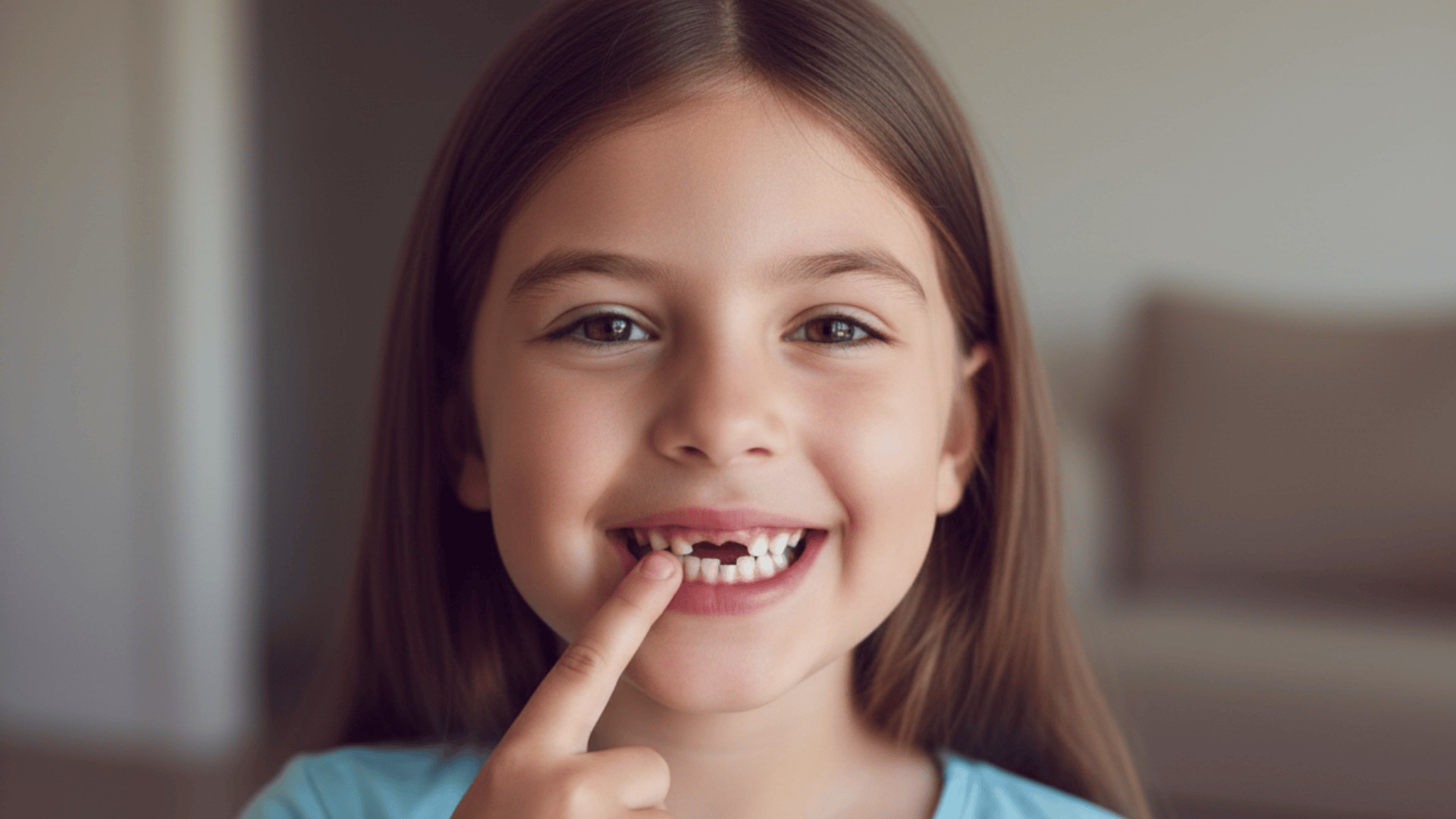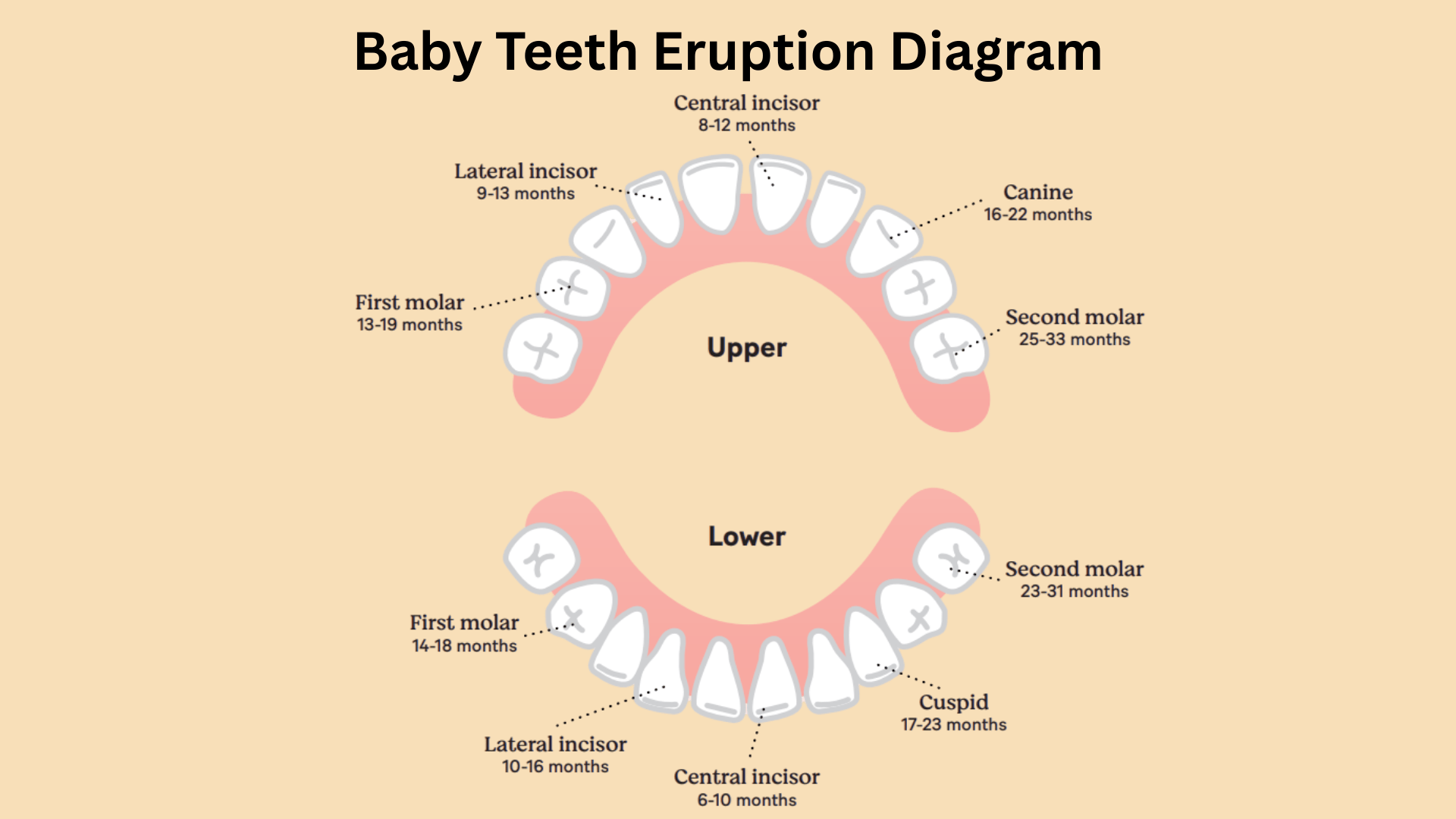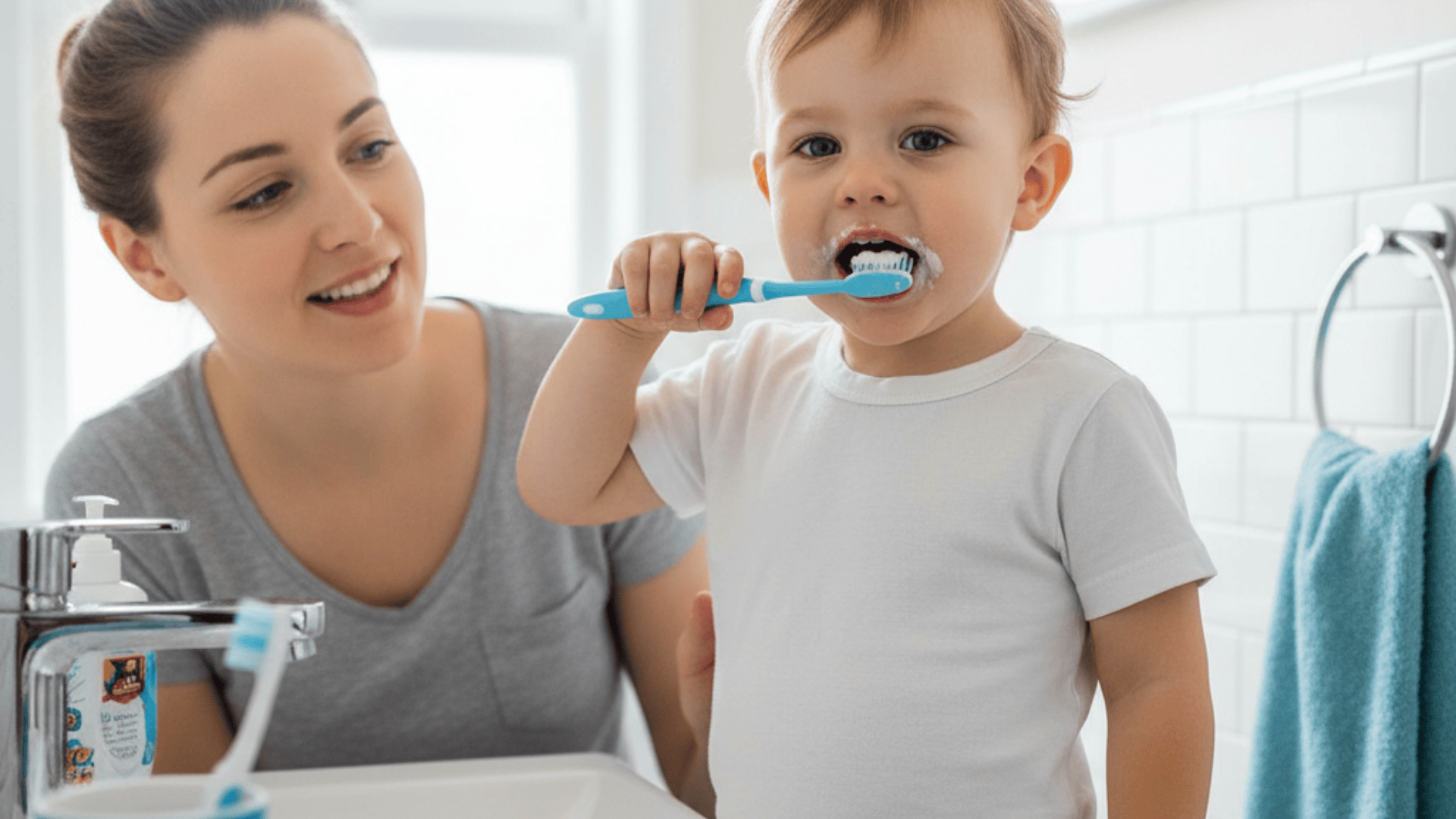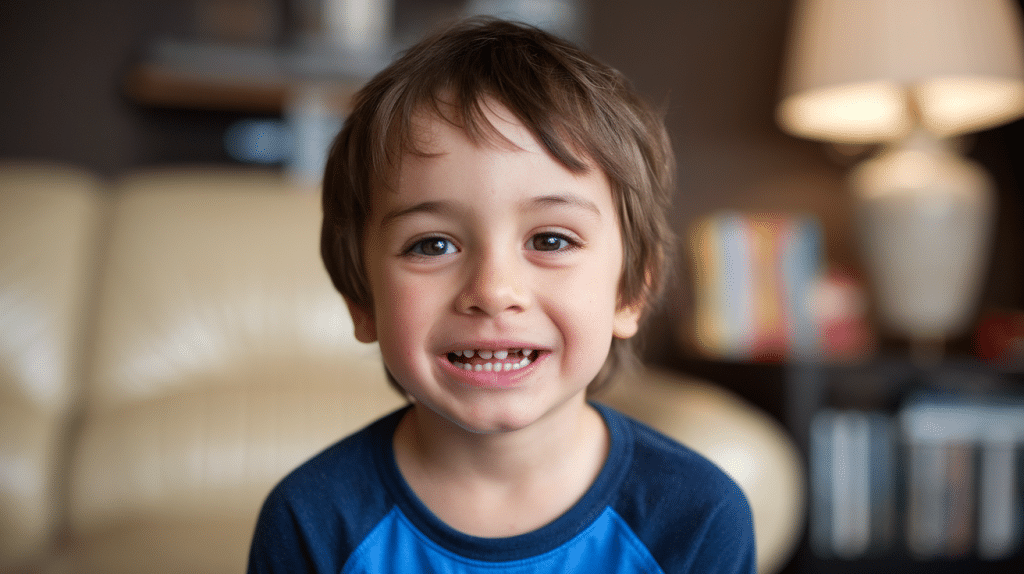Do all baby teeth fall out? Yes, but the timing is different for each child. There are 20 baby teeth in total, and they play an important role before permanent teeth appear.
The truth is, every child goes through a natural timeline, but it’s not the same for everyone. These teeth aren’t just placeholders.
Baby teeth help kids chew, speak, and hold space so adult teeth grow in correctly. Healthy baby teeth also make the shift to permanent teeth easier.
In this blog, you’ll see what baby teeth are, when they come in, when they fall out, and the usual order. You’ll also learn the signs of delays, what happens if teeth don’t fall out, and how to care for them until adult teeth replace them.
What are Baby Teeth and Why Do We Have Them?
Baby teeth, also called primary teeth, are the very first set of teeth children grow. Every child usually has 20 baby teeth in total. These teeth begin to appear around 6 months of age and stay in place until permanent teeth are ready to come in.
Baby teeth play an important role in your child’s growth:
- Chewing food: They make it easier for kids to eat and enjoy a variety of foods.
- Speaking clearly: Teeth help shape sounds and words as children learn to talk.
- Guiding adult teeth: Baby teeth hold the right space in the jaw, making sure permanent teeth grow in straight.
Even though they eventually fall out, baby teeth are just as important as adult teeth. Taking care of them early helps prevent problems later.
Timeline of Baby Teeth

Baby teeth don’t show up or fall out all at once. They follow a natural timeline, though every child is a little different.
When They Come In
Most babies get their first tooth around 6 months, though it can happen a little earlier or later. The bottom front teeth usually appear first, followed by the top ones.
By the time a child turns 3, all 20 baby teeth are usually present, giving them a complete first set of teeth.
When They Fall Out
Baby teeth start falling out around age 5 or 6 as permanent teeth push through. The process continues steadily, with different teeth loosening in order.
By age 12 or 13, most children have lost all their baby teeth. This stage prepares the mouth for a full set of permanent adult teeth.
Gender Differences
Girls often lose their baby teeth slightly earlier than boys. This difference is small, usually a few months to a year, and is considered completely normal.
It happens because girls generally grow a little faster in many growth milestones. Parents shouldn’t worry, as both boys and girls follow the same general pattern.
Normal Variations
It’s normal for some kids to lose their first teeth as early as age 4, while others may not start until 7 or 8.
These variations are healthy and usually not a sign of problems. Dentists consider a range of two years earlier or later than average to still be normal.
Visual Chart of Eruption and Shedding
A chart is one of the easiest ways to track your child’s teeth. It shows when each tooth usually comes in and when it’s expected to fall out.
| Tooth Type | When They Come In (Eruption) | When They Fall Out (Shedding) |
|---|---|---|
| Lower Central Incisors | 6–10 months | 6–7 years |
| Upper Central Incisors | 8–12 months | 6–7 years |
| Lower Lateral Incisors | 10–16 months | 7–8 years |
| Upper Lateral Incisors | 9–13 months | 7–8 years |
| First Molars (Upper & Lower) | 13–19 months | 9–11 years |
| Canines (Upper & Lower) | 16–23 months | 9–12 years |
| Second Molars (Lower) | 23–31 months | 10–12 years |
| Second Molars (Upper) | 25–33 months | 10–12 years |
Use this chart as a guide, and see a dentist if tooth loss happens much earlier or later than expected.
Baby Teeth Diagram

Baby teeth are lost in a sequence that allows the jaw and mouth to adjust as permanent teeth move in. Each stage clears space for the next set of adult teeth, helping them come in straight and aligned.
By knowing the usual order, parents can follow along with their child’s progress and notice if something seems off.
The Order Baby Teeth Fall Out In
Baby teeth usually fall out in a set sequence, making space for permanent teeth to grow in the right places.
- Lower central incisors: Bottom front teeth, first to loosen and fall, marking the start of the tooth-shedding process.
- Upper central incisors: Top front teeth, usually next, creating the classic tooth-gap smile seen in early school years.
- Lateral incisors: Side teeth next to the front, falling around age 7–8 as permanent teeth begin to replace them.
- First molars: Chewing teeth in the back, loosen between ages 9–11, making space for stronger adult molars.
- Canines: Pointed teeth between incisors and molars, shed between ages 9–12, important for biting and guiding permanent alignment.
- Second molars: Very back teeth, last baby teeth to fall, usually between ages 10–12 before full adult teeth appear.
When to Worry About Baby Teeth
Most kids lose teeth on time, but delays can happen. Here are the main signs to look for.
- Signs of Delayed Tooth Loss: If one tooth stays firm while the same tooth on the other side has fallen out, it may be a concern. Permanent teeth pushing in behind baby teeth or no teeth lost by age 7–8 are also warning signs. Baby teeth still present after age 13 should always be checked.
- When to See a Pediatric Dentist: See a dentist if teeth fall much earlier or later than expected, if a loose tooth causes pain or swelling, or if permanent teeth erupt crowded or crooked.
- Impact on Permanent Teeth If Baby Teeth Don’t Fall Out: Baby teeth that stay too long can block permanent teeth. This may cause crowding, misalignment, or teeth stuck in the gums, often needing orthodontic care.
Adults With Baby Teeth
Some adults keep baby teeth if no permanent tooth forms or if the adult tooth cannot erupt. Common causes include missing permanent teeth, ankylosis (a tooth fused to bone), or crowding.
Treatment may involve leaving the tooth if it’s healthy, replacing it with an implant, or using braces to adjust spacing. Regular dental checkups help decide the best approach.
In some cases, early treatment can prevent bigger bite problems later. Dentists may also recommend monitoring the tooth closely if it remains strong and stable.
Caring for Baby Teeth Before They Fall Out

Even though baby teeth are temporary, they need proper care to stay healthy until they’re replaced by permanent teeth. Good habits early on protect a child’s smile and make the transition smoother.
- Cleaning Routines: Brush twice a day with a small, soft toothbrush and fluoride toothpaste. Floss once teeth start touching to remove food between them.
- Preventing Cavities: Limit sugary snacks and drinks, and schedule regular dental checkups. Fluoride treatments may also help protect enamel.
- Preparing Kids for Loose Teeth: Explain that losing teeth is normal and not painful. Encourage gentle wiggling, but avoid forceful pulling until the tooth is ready.
Specialized Care for Dental Problems in Children
Not all tooth issues can be handled at home, and this is where pediatric dentists provide specialized care. They are trained to treat complex conditions that may affect how a child’s teeth and jaw develop.
Some examples include:
- Impacted Teeth: When a permanent tooth is trapped in the gums, minor procedures may help it erupt.
- Severe Decay: Deep cavities in baby teeth may require fillings or baby root canals.
- Injuries: Falls or accidents can damage baby teeth or gums, and dentists check if permanent teeth are affected.
- Abnormal Shape or Size: Unusual tooth size or shape can cause spacing issues that need early care.
Early treatment keeps both baby teeth and incoming adult teeth healthy.
Conclusion
Baby teeth play an important role in a child’s growth, and they naturally fall out as permanent teeth take their place. This process usually happens through the school years, but the exact timing can be earlier or later depending on the child.
Variations are common and not a cause for concern on their own. What matters most is keeping an eye on how teeth are coming in and going out.
If there are long delays, pain, or crowding, a pediatric dentist can provide clear answers and guidance. Regular checkups not only give peace of mind but also help prevent future problems. To learn more, read my blogs.











